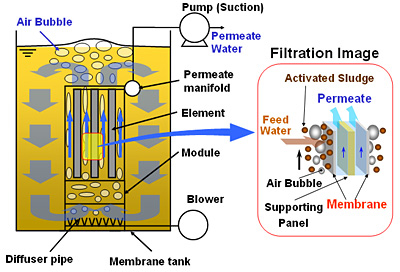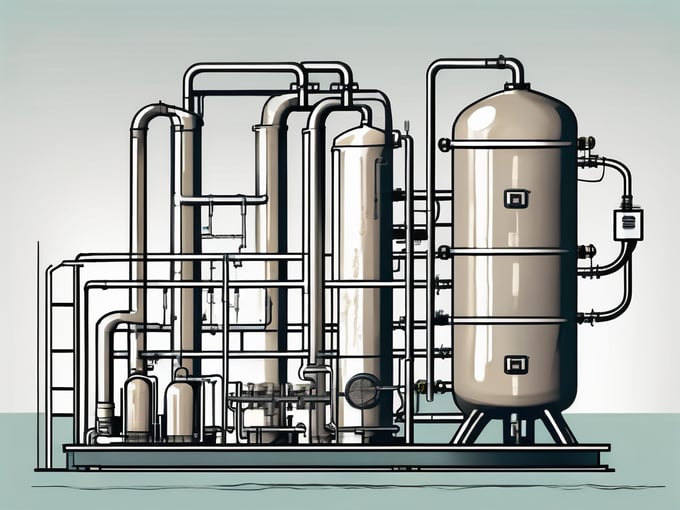The Science Behind Membrane Bioreactor: How It Works and Why It’s Effective
The Science Behind Membrane Bioreactor: How It Works and Why It’s Effective
Blog Article
The Benefits of Membrane Bioreactors in Sustainable Wastewater Management
Membrane layer bioreactors (MBRs) represent an essential development in sustainable wastewater administration, successfully combining organic therapy with innovative membrane filtration modern technology. This assimilation not just boosts effluent quality by successfully getting rid of impurities but likewise opens up avenues for water reuse in numerous applications, hence addressing journalism requirement for source preservation. The compact style of MBRs contributes to significant decreases in ecological impact and functional prices. As the demand for sustainable solutions heightens, discovering the diverse benefits of MBRs might expose unexpected implications for the future of wastewater therapy systems.
Review of Membrane Layer Bioreactors
Membrane bioreactors (MBRs) stand for a considerable improvement in wastewater therapy innovation, integrating organic destruction with membrane purification to improve the effectiveness of the treatment procedure. This innovative system incorporates the advantages of conventional triggered sludge procedures with membrane layer innovation, permitting enhanced solid-liquid separation. MBRs utilize semi-permeable membranes to separate cured water from biomass, causing top quality effluent that can be recycled or safely released right into the environment.
The operational layout of MBRs commonly involves a bioreactor where microbes break down raw material, complied with by a membrane system that filters the mixed liquor. This setup not just lessens the footprint of the treatment facility but also enables greater biomass concentrations and reduced hydraulic retention times. MBRs are capable of treating a larger variety of pollutants, including nutrients and virus, making them ideal for numerous applications, from local wastewater therapy to industrial effluent handling.
The combination of MBRs right into wastewater monitoring systems is a measure of a growing trend towards efficient and sustainable practices in environmental engineering. Their ability to produce premium effluent while lessening space demands placements MBR modern technology as a key gamer in contemporary wastewater treatment services.
Enhanced Effluent Top Quality

The membrane purification procedure serves as a physical barrier, enabling the retention of bacteria and particle matter, which adds to a clearer and cleaner effluent (Membrane Bioreactor). MBRs run at greater biomass focus than traditional turned on sludge systems, advertising extra reliable biodegradation of toxins. This brings about a reduction in biochemical oxygen need (FIGURE) and overall put on hold solids (TSS) levels in the last effluent
Additionally, MBRs demonstrate exceptional efficiency in dealing with difficult wastewater structures, such as commercial effluents and wastewater with high nutrient tons. As a result, the effluent produced is commonly of better, enabling more adaptable disposal choices and decreased environmental effect. Ultimately, the enhanced effluent quality attained you could try this out with MBR innovation underscores its critical duty beforehand sustainable wastewater administration methods.
Water Reuse Opportunities
The high-grade effluent created by my site membrane layer bioreactors (MBRs) opens up substantial chances for water reuse in different applications. MBRs efficiently get rid of impurities, consisting of microorganisms, suspended solids, and natural matter, causing cured water that satisfies or surpasses regulatory requirements for reuse. This high quality enables the implementation of water recycling initiatives across diverse fields.
One famous application remains in agriculture, where dealt with wastewater can be made use of for watering, advertising lasting farming methods while preserving freshwater sources. Additionally, MBR-treated effluent can be made use of for industrial processes such as cooling, cleansing, and as a process water resource, considerably decreasing the demand for drinkable water in these procedures.
In metropolitan environments, MBRs promote making use of redeemed water for landscape irrigation, commode flushing, and various other non-potable uses, contributing to the general strength of supply of water systems. The assimilation of MBR innovation in decentralized systems help in handling localized water needs, particularly in water-scarce regions.
Lowered Ecological Influence
Exactly how can the adoption of membrane layer bioreactors (MBRs) add to a minimized ecological impact in wastewater management? MBRs considerably enhance the treatment performance of wastewater while reducing ecological disturbances. Membrane Bioreactor.
In addition, MBRs operate at lower hydraulic retention times compared to traditional systems, causing smaller sized therapy plant impacts. This compact layout lowers land usage, consequently protecting natural habitats and biodiversity. The procedure likewise generates much less sludge than conventional techniques, alleviating disposal difficulties and lowering greenhouse gas exhausts related to sludge monitoring.
Furthermore, MBRs promote the healing of useful resources, such as water and nutrients, adding to a circular economic climate. By making it possible for water reuse for watering or industrial procedures, MBRs help minimize freshwater deficiency, thus promoting lasting water make use of practices. Eventually, the adoption of MBR innovation stands for a significant stride have a peek at this site towards minimizing the ecological effect of wastewater management systems.
Economic Advantages of MBRs

Additionally, MBRs help with the manufacturing of top notch effluent, which can be recycled for numerous applications, such as agricultural watering and commercial procedures - Membrane Bioreactor. This reuse capability can significantly lower water purchase prices, offering a monetary motivation for industries facing rigid water regulations
The portable layout of MBR systems additionally causes decreased land requirements, which is particularly important in metropolitan locations where property is expensive. By minimizing space, towns and sectors can save on land purchase and upkeep expenses.
In addition, MBRs typically call for less frequent upkeep and have a longer life expectancy than traditional systems, better adding to set you back savings. In recap, the financial benefits of MBRs-- ranging from minimized operational costs to land savings and effluent reuse-- make them a compelling option for lasting wastewater monitoring, using both lasting and prompt economic advantages.
Verdict
Additionally, MBRs add to minimized ecological influences with portable designs and lower sludge generation. Economic advantages additionally improve their viability, making MBRs an encouraging service for attending to the challenges of wastewater treatment and advertising lasting source administration.
Membrane layer bioreactors (MBRs) stand for a pivotal improvement in sustainable wastewater management, efficiently combining organic therapy with innovative membrane layer filtering technology.Membrane bioreactors (MBRs) represent a significant innovation in wastewater treatment technology, integrating biological deterioration with membrane filtering to improve the efficiency of the treatment procedure.Accomplishing improved effluent top quality is one of the most considerable advantages of using membrane bioreactors (MBRs) in wastewater therapy.In addition, MBRs demonstrate outstanding efficiency in dealing with challenging wastewater structures, such as industrial effluents and wastewater with high nutrient lots.Integrating membrane layer bioreactors (MBRs) into wastewater administration not only minimizes environmental effect yet also presents significant economic benefits.
Report this page